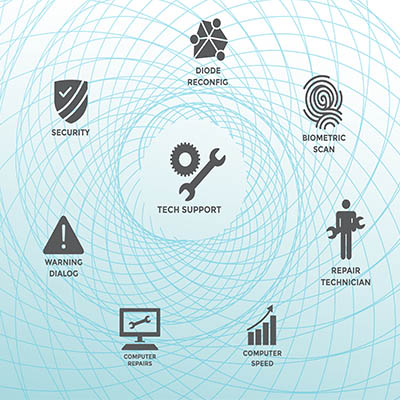Unfortunately, we have yet another reason to reflect on the importance of data backup, disaster recovery, and business continuity for organizations everywhere. A week ago today, Hurricane Beryl made landfall in Texas, downgrading to a tropical storm, but only after it had already caused estimated damages totaling over $5 million amongst the islands of middle America.
First, my team and I wish the best to any organizations affected by Beryl and, more importantly, their employees. Hopefully, they had the proper business continuity preparations and could pick themselves up relatively quickly.
While this event is still fresh in our minds, let’s review what business continuity is, what it requires, and how to achieve it.
What is Business Continuity?
Simply put, business continuity is your ability to maintain a predetermined level of operations despite a disaster of any scale, from a hurricane to half the office coming down with food poisoning.
The hard truth is that “disasters” come in all sizes, and it doesn’t take much to disrupt business processes. This makes it critical to have a strategy ready for when something happens that would otherwise prevent your business from operating efficiently. Three-quarters of companies without a business continuity plan fail within three years of suffering from a disaster.
Data backup is one critical aspect of a business continuity strategy, which means ensuring your business’ backup meets specific prerequisites is essential.
How to Design a Business Backup Strategy
As you go about preparing your business’ backup, there are a few questions it is helpful to take into consideration:
How many backups will you maintain?
Here’s a scenario: a disaster has happened, and your business’ data has been corrupted. Fortunately, you have a backup copy for just this situation. However, when you attempt to restore from your backup, you discover that it wasn’t configured properly, so some data has not been updated for some time. Maintaining multiple backups helps reduce the chance of this happening.
Where are your backups to be stored?
This is very important to determine because (depending on the nature of the disaster) you wouldn’t want your backup to suffer the same fate as your operational data. Best practices dictate that your multiple copies are stored in assorted places—at least one additional copy on-site and at least one offsite (ideally, in the cloud). This means your data will be protected even if something also happens to one of your backups in a disaster.
How often should backups be taken?
We recommend that you take advantage of the capabilities most backup tools offer today and utilize their incremental backup features. Rather than completely rewriting your backup at the end of the day, as more antiquated options once would, an incremental backup regularly reviews your data and preserves any changes made since the last scan. These can be scheduled to occur as often as every 15 minutes, helping minimize the actual data loss you would suffer.
These Are Just the Basics of Business Backup and Continuity
We’re here to help you take it from the basics to advanced implementation, guiding you through the steps to prepare and maintain an insurance policy of sorts for your business. Give us a call at 978-798-6805 to learn more and get started.
Of course, we also want to extend our sympathies again to those currently suffering from Beryl’s aftereffects and wish them a speedy and successful recovery.







